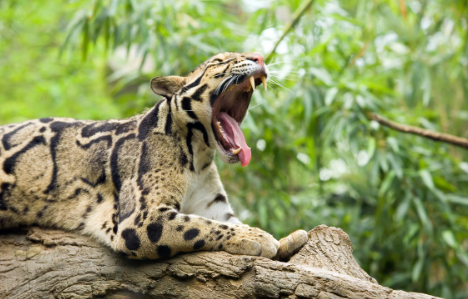New Study Urges Better Protection for Sunda Clouded Leopards
The Sunda clouded leopard population in Borneo has decreased to around 3,800 individuals. This decline is linked to habitat loss caused by human activities like deforestation. A recent study, published on August 21, 2024, in npj Biodiversity and led by Ewan Macdonald from Oxford University, reveals that current protected areas are often located in less critical regions, such as high mountains, rather than in the key habitats where the leopards are most endangered.
Importance of Borneo’s Forests
The forests of Borneo are essential for fighting climate change because they store carbon. However, ongoing forest destruction not only threatens leopard habitats but also reduces the forests’ ability to store carbon.
Conservation Strategies
The study examined two main approaches for protecting the Sunda clouded leopards:
Pro-active Protection: Focuses on areas that are currently at high risk.
Expedient Protection: Involves protecting areas that are already secure.
Researchers used predictive models to explore future scenarios, considering potential forest loss and changes in leopard populations.
Data and Methodology
Researchers used the resistant kernel approach to identify key leopard habitats, which analyzes movement patterns and environmental needs. They also employed the MARXAN software to evaluate different conservation plans and find the best areas to protect.
Impact of Current Practices
The study found that improving protection in high-risk areas could increase leopard habitat by 53% and save an additional 82 million tonnes of carbon. This shift is crucial because many land-use practices currently offer greater financial benefits than forest conservation.
Policy Recommendations
The study suggests:
- Implementing initiatives like REDD+ to provide financial incentives for forest conservation.
- Enforcing stricter regulations to penalize deforestation activities.
Governments, conservationists, and local communities must work together to protect Borneo’s wildlife and forests. The choices made today will have lasting effects on both the leopards and the global environment.
About Sunda Clouded Leopard
The Sunda clouded leopard (Neofelis diardi) is native to Borneo and Sumatra. It is different from the mainland clouded leopard due to its darker coat and larger size. This species is an excellent climber, often hunting in trees. They are mostly solitary and active at night. Their diet includes deer, birds, and monkeys. Sunda clouded leopards can leap up to six times their body length. They are listed as vulnerable because of habitat loss and poaching. Genetic studies suggest they might be two separate species.
Month: Current Affairs - August, 2024
Category: Environment Current Affairs








